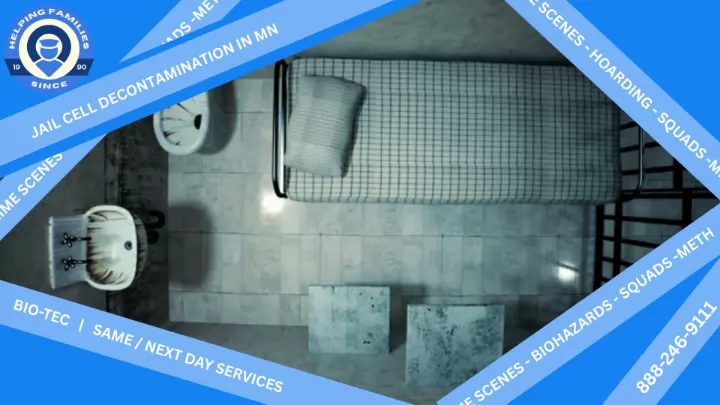Are cleaning technicians required to have certifications?
Yes, most professionals hold certifications such as IICRC and OSHA training specific to biohazard remediation.
Do crime scene cleanup professionals work 24/7?
Many companies offer emergency services and are available around the clock to respond to urgent hazardous incidents.
What�s the difference between residue from meth use and meth manufacturing?
Meth use, especially when smoked, can leave behind lower levels of contamination compared to manufacturing. However, both activities are harmful. Smoking meth in a room repeatedly can cause residue to settle on surfaces and get into porous materials like carpets, drywall, and upholstery. Manufacturing, on the other hand, involves hazardous chemicals and produces both airborne and surface contamination at much higher concentrations. Additionally, manufacturing releases volatile organic compounds (VOCs), which can seep into structural materials and pose long-term health risks. Professional testing distinguishes between levels and can provide insight into whether a space was used for consumption or full-scale production.
What types of incidents are considered high-risk for biohazards?
High-risk incidents include violent crimes, large-scale accidents, and events with significant contamination from blood and bodily fluids.
How do remediation teams ensure all meth contamination is removed?
Professional remediation teams follow a multi-step protocol to ensure complete decontamination. This typically starts with an initial assessment and laboratory testing to map contamination levels. The next step involves removing and properly disposing of contaminated materials, such as drywall, carpets, and insulation. Non-porous surfaces are treated with industrial-grade cleaners designed to break down and neutralize meth residues. After cleaning, a post-remediation test is conducted to confirm that contamination levels fall below legal or recommended thresholds. In some cases, encapsulation techniques (like sealing surfaces with paint) are used as an extra safety measure. Every step is documented and often reviewed by health departments for compliance.
What steps are taken when dealing with chemical burns on upholstery?
Specialized techniques are used to neutralize chemicals and repair or replace damaged upholstery.
Who performs biohazard cleaning?
Trained professionals certified in handling hazardous materials and following OSHA standards.
What is the process for cleaning gunshot residue from surfaces?
Specialized cleaning agents and techniques are used to remove gunshot residue while preserving potential evidence for law enforcement.
What steps are taken if bodily fluids enter into door locking mechanisms?
Mechanisms are dismantled as needed, cleaned, disinfected, and reassembled for safe use.
Can mold testing detect all types of mold?
Yes professional mold testing can identify various mold species including toxic black mold.
